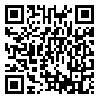BibTeX | RIS | EndNote | Medlars | ProCite | Reference Manager | RefWorks
Send citation to:
URL: http://goljaam.icsa.ir/article-1-251-en.html
The present article is a kind of field and historical research accomplished based on available historical and imagery sources aiming at clarifying the changes that have been taken place in patterns and designs of mentally-woven mazlagan carpet and its patterns and motifs categorization in recent century. In addition to the historical investigation based on written and unwritten sources, a field study was also conducted in Mazlagan village, to find out old carpets, take their picture and interview with the old and famous people in Saveh and Tehran market and finally by comparing the information and pictures, the changes in patterns and designs of mentally-woven Mazlagan carpet were determined. Then, based on the obtained results, an attempt has been made to categorize and classify patterns and designs of this mentally-woven carpet. The results indicated that the patterns and designs of Mazlagan carpet can be classified with regard to two perspectivess which are forms and motif models; visual and physical nature of motifs as well as application of these motifs in the body or in the borders into four categories of plants and forms or models. The plant category can be divided into single flowers, leaf, leaf and flower band, three leaf flowers and incoming flowers and the last category to three subcategories of multi-angles including three, four, five, six and ehight angles and forms consisting of panes and arrows ,toothed and elbows. Borders in Mazlagan carpet can be divided into four types of two dostkomi and first until third type Harati.
Received: 2016/02/3 | Accepted: 2016/08/31 | Published: 2017/06/22
| Rights and permissions | |
 |
This work is licensed under a Creative Commons Attribution-NonCommercial 4.0 International License. |






